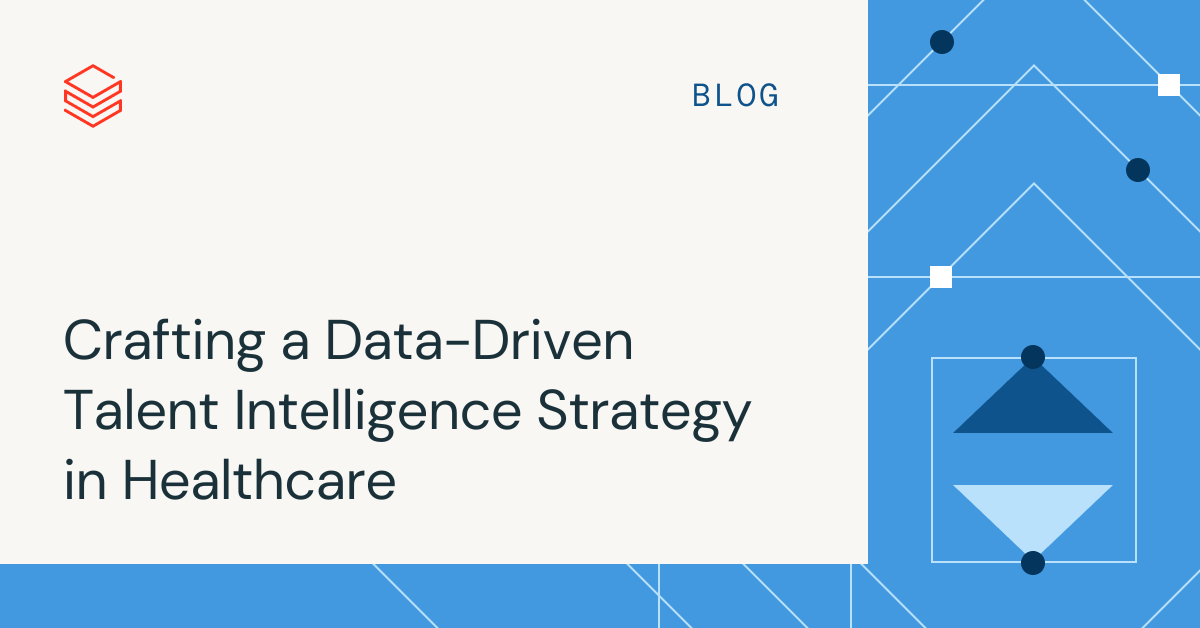Crafting a Data-Driven Talent Intelligence Strategy in Healthcare
Leveraging People Data Labs, LinkUp, and Databricks

This blog was written in collaboration with Ben Eisenberg, VP of Innovation at People Data Labs, and Tom Ashenmacher, Chief Revenue Officer at LinkUp.
Across every industry, demand for top talent consistently outpaces available supply. Take for instance the biotech industry, which requires highly specialized skill sets in every role from data scientists to biomedical engineers. It's no surprise that with explosive growth in the field (a recent growth of 79% versus 8% for all other occupations), those organizations face the greatest need for skilled workers.
HR and recruiting teams are taking the lead in seeking out innovative and data-driven solutions to source, attract, and retain the best talent. After all, an organization's competitive moat isn't just the products and services they offer - it's the human capital that brings ideas to life.
McKinsey research found the top 25 to 50 roles in an organization can create the majority of a company's potential value. If we can arm our Talent Intelligence teams with additional information to make hiring decisions or identify the next market to open an office, what new opportunities can we unlock?
While third-party applications can help answer questions about talent, technology-forward companies are forming dedicated Talent Intelligence data teams who analyze raw, human-capital data to identify and understand the talent landscape. The competitive edge in hiring is built on data powering predictive analytics.
Getting the Right Data is Challenging
Unlocking answers from human capital data requires solving problems with multiple layers of complexity across the data estate, including:
Managing Internal Data: healthcare organizations often struggle to tap into their own internal talent data, due to data governance regulations and the difficulty in finding and connecting data from various internal systems.
Unifying External Data: unifying this internal data with external data providers presents an even more difficult problem. Merging internal and external datasets that are inherently imperfect and incomplete is often a challenge.
Data Cleanup: even with unified data, ensuring data accuracy across large talent pools like healthcare and life sciences is challenging. Furthermore, standardizing and cleaning free-text data like job titles and skills is both time-consuming and error-prone.
Maintaining Nuance: HR teams want to understand not only general hiring trends but also dive deeper into more nuanced questions. While external tools can provide aggregate statistics and benchmarks, having access to raw data is crucial for adding context and building trust with internal stakeholders.
See the Full Picture with People Data Labs & LinkUp
To understand the healthcare talent landscape, organizations need a comprehensive 360-degree view of talent data. That's where People Data Labs (PDL) and LinkUp come into play, providing employee and job market data.
Employee Data: PDL's data helps healthcare organizations understand the "why" and "how" behind talent trends by providing data about people's work history, location, and other attributes on an individual resume. By aggregating PDL data, HR teams can compare their workforce's job skills with competitors, identify where competitors are sourcing their talent, and gain a deeper understanding of the intricacies of the talent market.
Job Market Data: LinkUp focuses on job market data sourced exclusively from employer websites and never from aggregators which are often overrun with duplicate and expired listings. It provides information about job listings, salary ranges, and hiring trends. This data is useful for shaping compensation packages, job postings, and hiring strategies as well as forecasting future talent demand.
Better Together: by combining data on talent demand and supply in a single location in Databricks, Talent Intelligence leaders can build a comprehensive understanding of the markets they operate in, forecast future trends, and build models to predict what skills are required for the future of their industry.
Speed up Time-to-Insight with Databricks
Databricks, a unified data, analytics, and AI platform, speeds up the time it takes to derive value from an organization's data while maintaining compliance with privacy regulations. Databricks lets organizations combine their own internal human capital management (HCM) data with raw data from providers like PDL and LinkUp and helps transform it into actionable insights.
Databricks acts as the central hub for data governance, modeling, data science tooling, and dashboard creation. This consolidation streamlines the analytics process, allowing healthcare organizations to leverage their data effectively.
Data is the Key to Unlocking the Strategic Side of HR
People Data Labs and LinkUp offer invaluable resources for understanding the talent landscape and job market dynamics. When combined with Databricks, healthcare organizations can streamline data integration, analytics, and reporting. This transformation not only accelerates time-to-insight but also empowers HR teams to become strategic advisors, shaping the future of healthcare.
Talent Intelligence teams - check out the Databricks Marketplace, and get started using People Data Labs and LinkUp data in your Databricks environment.

